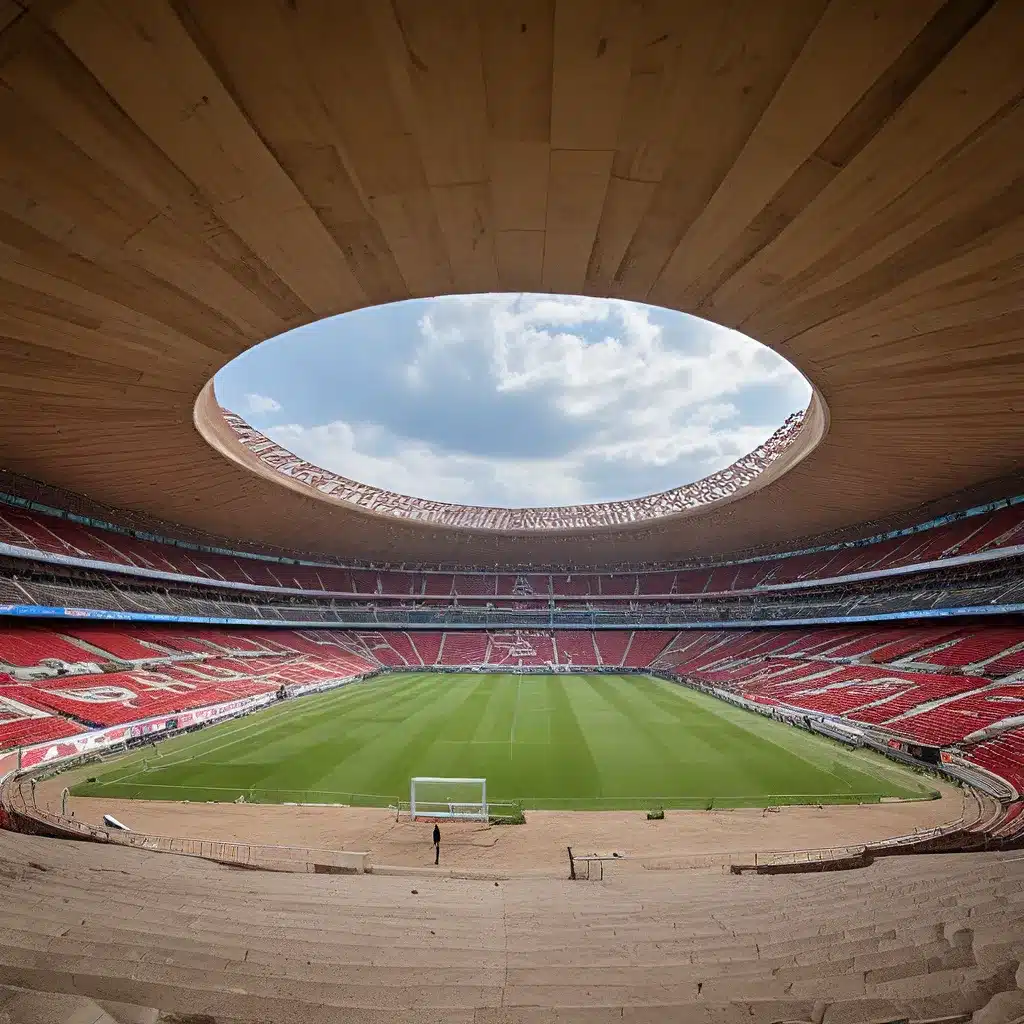
The Luzhniki Stadium, situated in the heart of Moscow, Russia, is a true architectural marvel that has captivated the attention of sports enthusiasts, architecture aficionados, and casual observers alike. This iconic stadium, with its sweeping lines and imposing presence, has been the backdrop for some of the most significant sporting events in the world, from the 1980 Olympic Games to the 2018 FIFA World Cup.
The Stadium’s Impressive History
The Luzhniki Stadium, originally known as the Central Lenin Stadium, was constructed in the 1950s as part of a larger development project aimed at transforming Moscow into a modern, global city. Designed by a team of renowned Soviet architects, the stadium’s construction was a true feat of engineering, with its massive concrete structure and intricate detailing reflecting the architectural style of the era.
The stadium’s strategic location, nestled along the banks of the Moskva River, has also contributed to its enduring significance. Its proximity to the iconic Red Square and other historic landmarks has made it a focal point for both sports and cultural events throughout its history.
Architectural Marvels and Design Elements
The Luzhniki Stadium’s design is a true testament to the skill and vision of its creators. The stadium’s imposing structure, with its sweeping, curved roofline and towering concrete pillars, has become an instantly recognizable symbol of Moscow’s architectural landscape.
One of the stadium’s most striking features is its vast seating capacity, which can accommodate up to 81,000 spectators. The stadium’s interior is equally impressive, with its state-of-the-art facilities, including locker rooms, media centers, and hospitality suites, all designed to provide the ultimate experience for athletes and fans alike.
The stadium’s attention to detail is evident in its use of materials, with the extensive use of concrete, steel, and glass creating a harmonious blend of form and function. The stadium’s lighting system, designed to create a dramatic and immersive atmosphere during evening events, is another impressive aspect of its design.
Embracing Modernization and Sustainability
In recent years, the Luzhniki Stadium has undergone a significant renovation and modernization process, ensuring that it remains a world-class venue for the 21st century. These updates have included the installation of state-of-the-art video screens, the implementation of energy-efficient lighting systems, and the enhancement of the stadium’s overall accessibility and sustainability.
The stadium’s commitment to environmental responsibility is particularly noteworthy, with the incorporation of renewable energy sources and water conservation measures demonstrating its dedication to minimizing its carbon footprint. These efforts have not only improved the stadium’s operations but have also set a precedent for other sports venues around the world.
A Symbol of Russian Pride and Global Significance
The Luzhniki Stadium’s enduring legacy extends far beyond its impressive architectural features and technological innovations. As the host of numerous international sporting events, the stadium has become a symbol of Russian pride and global significance, cementing its place in the pantheon of the world’s most iconic sports venues.
The stadium’s rich history and cultural significance have made it a must-visit destination for sports enthusiasts and architecture lovers alike, who flock to Moscow to experience the grandeur of this remarkable structure firsthand.
Ongoing Research and Future Developments
As with any landmark of this scale and importance, the Luzhniki Stadium continues to be the subject of ongoing research and analysis by architects, engineers, and urban planners. Scholars and experts are constantly exploring new ways to enhance the stadium’s functionality, improve its sustainability, and strengthen its connection to the local community.
Some areas of active study include the potential for integrating renewable energy sources more extensively, optimizing crowd management and transportation, and exploring innovative materials and construction techniques that could further refine the stadium’s architectural design.
While the stadium’s future may hold exciting new developments, one thing is certain: the Luzhniki Stadium will remain a cherished symbol of Moscow’s architectural legacy and a testament to the enduring power of human ingenuity and creativity.

